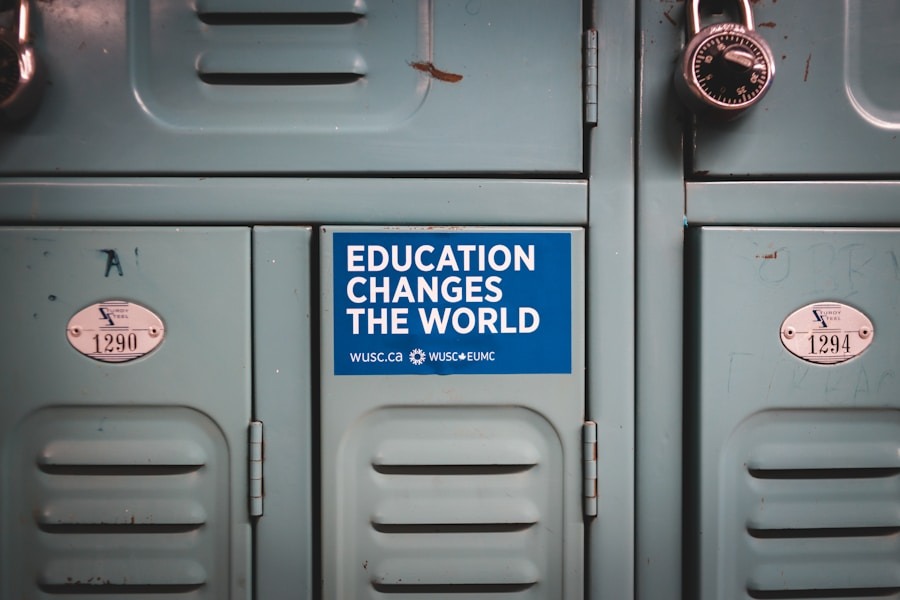Global education is increasingly recognized as a vital component of modern learning, transcending geographical boundaries and fostering a more interconnected world. In an era marked by rapid globalization, the ability to understand and engage with diverse cultures, perspectives, and ideas is paramount. Global education equips students with the skills necessary to navigate an increasingly complex international landscape, preparing them not only for careers that may span multiple countries but also for active citizenship in a global society.
This educational approach emphasizes critical thinking, empathy, and cultural awareness, which are essential for addressing the multifaceted challenges that humanity faces today.
It encourages collaboration among learners from different parts of the world, fostering mutual respect and understanding.
For instance, programs that facilitate international student exchanges or collaborative projects between schools in different countries allow students to learn from one another’s experiences and perspectives. This exchange not only enriches their educational journey but also cultivates a sense of global responsibility, urging them to consider the implications of their actions on a worldwide scale.
Key Takeaways
- Global education is important for fostering global citizenship and understanding of diverse cultures and perspectives.
- Technology plays a crucial role in connecting students across borders, providing opportunities for collaboration and learning.
- Cultural exchange has a significant impact on global education, promoting empathy, tolerance, and appreciation for diversity.
- Bridging borders through education presents challenges such as language barriers and unequal access to resources, but also opportunities for collaboration and mutual learning.
- Implementing global education initiatives requires strategies such as curriculum integration, teacher training, and partnerships with international organizations.
- The future of global education will be shaped by trends such as virtual exchange programs, online learning platforms, and innovative teaching methods.
The Role of Technology in Connecting Students Across Borders
Technology has revolutionized the way education is delivered and experienced, serving as a powerful tool for connecting students across borders. The advent of the internet and digital communication platforms has made it possible for learners to engage with peers from different countries in real-time, breaking down traditional barriers associated with distance and time. Online learning environments, such as virtual classrooms and collaborative platforms, enable students to participate in joint projects, share resources, and engage in discussions that transcend geographical limitations.
This technological integration not only enhances the learning experience but also fosters a sense of global community among students. Furthermore, technology facilitates access to a wealth of information and resources that were previously unavailable to many learners. With just a few clicks, students can access online libraries, educational videos, and interactive learning modules that provide insights into different cultures and global issues.
This democratization of knowledge empowers students to take charge of their education and encourages lifelong learning, which is essential in an ever-evolving global landscape.
The Impact of Cultural Exchange on Global Education

Cultural exchange plays a pivotal role in enriching global education by providing students with firsthand experiences that deepen their understanding of diverse cultures. Programs that facilitate cultural exchange—such as study abroad opportunities, international internships, or virtual exchange initiatives—allow students to immerse themselves in different cultural contexts. These experiences foster personal growth and broaden students’ worldviews, enabling them to appreciate the richness of human diversity.
For instance, a student who participates in a cultural exchange program in Japan may gain insights into Japanese customs, language, and social norms that would be difficult to acquire through textbooks alone. Moreover, cultural exchange promotes empathy and intercultural competence among students. By interacting with individuals from different backgrounds, learners develop the ability to see the world through others’ eyes, which is crucial for effective communication and collaboration in a globalized society.
This exposure to diverse perspectives can challenge preconceived notions and stereotypes, fostering a more nuanced understanding of global issues. For example, students who engage in dialogue with peers from conflict-affected regions may gain a deeper appreciation for the complexities surrounding issues such as migration or human rights. Such interactions not only enhance academic learning but also contribute to the development of socially responsible global citizens.
Challenges and Opportunities in Bridging Borders through Education
While the pursuit of global education presents numerous opportunities for enriching learning experiences, it is not without its challenges. One significant hurdle is the disparity in educational resources and infrastructure across different regions. In many parts of the world, access to quality education remains limited due to economic constraints, political instability, or inadequate facilities.
This inequity can hinder efforts to implement global education initiatives effectively, as students from underprivileged backgrounds may lack the necessary support to participate fully in international programs or collaborations. Additionally, cultural differences can pose challenges in cross-border educational initiatives. Variations in teaching styles, communication norms, and educational expectations can lead to misunderstandings or conflicts among students and educators from different backgrounds.
For instance, a student accustomed to a highly structured educational environment may struggle to adapt to a more open-ended approach favored in another culture. However, these challenges also present opportunities for growth and innovation. By addressing these disparities through targeted investments in education and fostering intercultural dialogue among educators and students, stakeholders can create more inclusive global education frameworks that benefit all learners.
Strategies for Implementing Global Education Initiatives
To effectively implement global education initiatives, a multifaceted approach is essential. First and foremost, educational institutions must prioritize partnerships with organizations that specialize in international education and cultural exchange. Collaborations with NGOs, government agencies, and private sector entities can provide valuable resources and expertise needed to develop robust programs that connect students across borders.
For example, schools can partner with organizations like AFS Intercultural Programs or the Fulbright Program to facilitate student exchanges or internships that promote cross-cultural understanding. Another critical strategy involves integrating global education into existing curricula. Educators should incorporate global themes into their lesson plans, encouraging students to explore international issues through various subjects such as history, science, or literature.
This interdisciplinary approach not only enriches students’ learning experiences but also helps them recognize the interconnectedness of global challenges. Additionally, professional development opportunities for teachers can enhance their ability to teach global competencies effectively. Workshops focused on intercultural communication or global citizenship can equip educators with the tools they need to foster an inclusive classroom environment that values diversity.
The Future of Global Education: Trends and Innovations

As we look toward the future of global education, several trends and innovations are emerging that promise to reshape the landscape of learning across borders. One notable trend is the increasing emphasis on experiential learning opportunities that allow students to engage directly with global issues. Programs that incorporate service-learning components or project-based learning initiatives enable students to apply their knowledge in real-world contexts while making meaningful contributions to communities around the world.
For instance, students participating in environmental conservation projects abroad not only gain practical skills but also develop a sense of responsibility toward global sustainability. Additionally, advancements in technology continue to drive innovation in global education. Virtual reality (VR) and augmented reality (AR) are being harnessed to create immersive learning experiences that transport students to different parts of the world without leaving their classrooms.
These technologies allow learners to explore historical sites, cultural landmarks, or even participate in simulations of global events, enhancing their understanding of complex issues through experiential engagement. As these technologies become more accessible and affordable, they hold the potential to revolutionize how students experience global education. In conclusion, the future of global education is poised for transformation as educators embrace innovative approaches that prioritize inclusivity, collaboration, and experiential learning.
By leveraging technology and fostering cultural exchange, stakeholders can create dynamic educational environments that prepare students for success in an interconnected world. As we navigate the challenges and opportunities presented by globalization, it is imperative that we continue to advocate for global education initiatives that empower learners to become informed and engaged citizens on a global scale.
In a related article, Mathematics Education in Social and Political Context: Mathematics as an Intellectual Property vs Mathematics as a Humanistic Discipline, the role of mathematics in education is explored through a social and political lens. The article delves into the debate surrounding mathematics as an intellectual property versus mathematics as a humanistic discipline, shedding light on the broader implications of how mathematics is taught and understood in society. This article provides valuable insights into the interconnectedness of education, society, and politics, echoing the themes of bridging borders and fostering connections in education for a connected world.
FAQs
What is the goal of “Bridging Borders: Education for a Connected World” article?
The goal of the article is to explore the importance of education in fostering global connectivity and understanding, and to provide insights into how educators can prepare students for a connected world.
What are the key topics covered in the article?
The article covers topics such as the impact of globalization on education, the role of technology in connecting students across borders, the importance of cultural competency, and strategies for integrating global perspectives into the curriculum.
Why is global connectivity important in education?
Global connectivity is important in education because it helps students develop a broader understanding of the world, fosters empathy and cultural awareness, and prepares them to thrive in a globalized workforce.
How can educators prepare students for a connected world?
Educators can prepare students for a connected world by integrating global perspectives into the curriculum, leveraging technology to connect with students from different countries, and promoting cultural competency and empathy.
What are some strategies for fostering global connectivity in education?
Strategies for fostering global connectivity in education include promoting cross-cultural communication, incorporating global issues into the curriculum, facilitating virtual exchanges with students from different countries, and providing opportunities for international collaboration and partnerships.






















+ There are no comments
Add yours